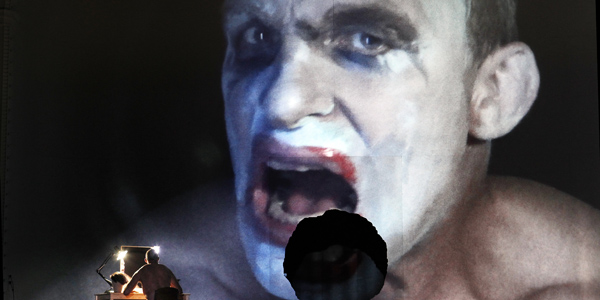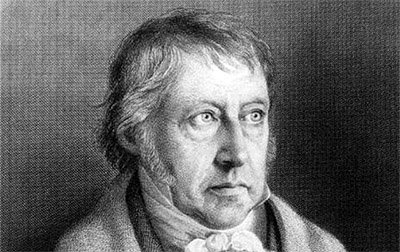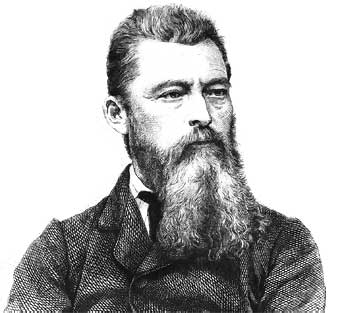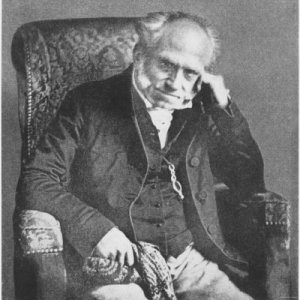Wagner Reclaimed: A Review of “The Ring of Truth” by Roger Scruton, Part 2

A scene from Neil Armfield’s 2016 Melbourne production of The Ring
“Sarcasm and satire run riot on the stage”
Productions of The Ring in the modern era have invariably sought to satirize the drama to subvert the message Wagner attempts to convey. Scruton observes that, notwithstanding the increasingly tiresome preoccupation with dissecting the tetralogy for anti-Jewish and proto-fascistic themes and images (and counteracting them), The Ring is also, on a more basic level, problematic for opera producers because its “world of sacred passions and heroic actions offends against the sceptical and cynical temper of our times. The fault, however, lies not in Wagner’s tetralogy, but in the closed imagination of those who are so often invited to produce it.”[1]
The template for modern productions was set with the Bayreuth production of 1976, when Pierre Boulez sanitized the music, and Patrice Chereau satirized the text. Scruton notes that:
Since that ground-breaking venture, The Ring has been regarded as an opportunity to deconstruct not only Wagner but the whole conception of the human condition that glows so warmly in his music. The Ring is deliberately stripped of its legendary atmosphere and primordial setting, and everything is brought down to the quotidian level, jettisoning the mythical aspect of the story, so as to give us only half of what it means. The symbols of cosmic agency — spear, sword, ring — when wielded by scruffy humans on abandoned city lots, appear like toys in the hands of lunatics. The opera-goer will therefore very seldom be granted the full experience of Wagner’s masterpiece.[2]
This certainly describes the Ring I attended in Melbourne in 2016. While the soloists and the orchestra were excellent, Neil Armfield’s postmodernist, Eurotrash-inspired production detracted from the power of the music and drama. Following established precedent, Armfield set much of the action in a space akin to an industrial wasteland. He lampooned the heroic forging scene by setting it in a tawdry apartment replete with fluorescent lighting, microwave, bar fridge and bunk beds. Fafner (meant to have transformed himself into a dragon) was depicted as a transvestite-like figure smearing make-up on his face and later appearing naked on the stage (see the lead photograph).
Productions like these deliberately sabotage Wagner’s attempt to engage his audiences at the emotional level of religion. They let “sarcasm and satire run riot on the stage, not because they have anything to prove or say in the shadow of this unsurpassably noble music, but because nobility has become intolerable. The producer strives to distract the audience from Wagner’s message, and to mock every heroic gesture, lest the point of the drama should finally come home.”[3]
The philosophy and meaning of The Ring
Schopenhauer is often singled out as the most important intellectual influence on Wagner, since it was his reading and rereading of Schopenhauer that helped to crystallise the pessimistic vision of Wagner’s later years. Prior to his encounter with Schopenhauer, however, it was Fichte, Hegel and Feuerbach who most shaped Wagner’s worldview, and Scruton observes how Fichte’s notion of the self, the Young Hegelian critique of capitalism, Feuerbach’s repudiation of religion, and Schopenhauer’s theory of the will all left traces in his musical dramas.
The Ring was first conceived when Hegel and the Young Hegelians were setting the agenda for German philosophy. During the 1849 revolution in Dresden, as he kept watch from the Frauenkirche on behalf of the revolutionaries, Wagner was discovered deeply immersed in Hegel’s Phenomenology of Spirit. In Scruton’s assessment, The Ring is predominately a post-Hegelian, rather than a Schopenhauerian, work — with Wagner having fully absorbed the Hegelian idea of Selbstbestimmung, where the free, morally responsible individual emerges from the condition of nature.

G.W.F. Hegel
A famous passage in The Phenomenology of Spirit describes the transition from a “life-and-death struggle” in the state of nature to the acceptance of universal moral law. Through his enslavement the slave acquires a consciousness of himself as an agent (inner freedom), while his enslaver gradually loses that consciousness and with it his sense of agency. The slave eventually rises up and binds his oppressor and the roles are repeatedly reversed until the moment when each party sees the other as an end instead of a means, recognizing that freedom is their shared condition and thus accepting the governance of a universal moral law. This process, where freedom and mutual respect emerge from the condition of slavery, exemplifies the Hegelian “dialectic”: the emergence from opposition of a new condition that transcends and resolves the conflict. Scruton observes how:
The Ring tells the story of Siegfried’s quest for freedom and individuality through contests with a dwarf, a dragon, a god and the woman who teaches him fear. … The reverberations of Hegel’s argument can be felt not only in that central story but throughout the Ring cycle: in the self-torment of Alberich, who has forsworn love for the sake of power; in the dark underworld of Nibelheim, whose subjugated people are instruments of a will that they cannot influence; in the tragedy of Die Walküre, in which two human beings win through to freedom only to find that the god who planned this can no longer permit it. And Hegel’s account of law and its indispensable presence in the life of the free being is embodied in the character of Wotan, king of the gods.[4]
Hegel, who was an admirer of Napoleon, had a strong belief in the historical importance of heroes. In his Philosophy of History, published posthumously in 1834, he argued that it was largely through the intervention of heroes like Julius Caesar and Napoleon that history changed and new worlds came into being. Scruton notes that Wagner was reading this very work when he began the poem of The Ring, and “at first conceived the work as the story of just such a hero, Siegfried, who was to usher in the new world of human freedom after the downfall of the gods.”[5]
An “attempt to salvage the kernel of religion”
Scruton’s central thesis in The Ring of Truth is that Wagner conceived the tetralogy as a quasi-religious parable to provide modern people, who had lost their faith in the divine order, with “a vision of the ideal, achieved with no help from the gods, a vision in which art takes the place of religion in expressing and fulfilling our deepest spiritual longings.”[6] Scruton bases this on the statements of Wagner himself who, for example, once famously declared the goal of art should be “the presentation of religion in a lively form.” Wagner endeavoured to offer his audiences a post-Christian folk metaphysics that recaptures what religion means in a world without religion.
While Wagner was not in a conventional sense a religious believer, Scruton claims that “he took a profoundly religious view of the human condition” and aimed in all his mature works to “give credibility to the thought that we are rescued by our ideals, despite their purely human origin, and also because of it.”[7] In his essay “Art and Religion” from 1880, Wagner argued that: “It is reserved to art to salvage the kernel of religion, inasmuch as the mythical images which religion would wish to be believed as true are apprehended in art for their symbolic value, and through ideal representation of those symbols art reveals the concealed deep truth within them.”[8]
In his post-religious conception of the role of art, Wagner was influenced by the German post-Hegelian philosopher Ludwig Feuerbach’s critique of religion as laid out in his 1843 book Principles for the Philosophy of the Future. Borrowing the concept of the “fetish” from Kant, Feuerbach argued that religion is a form of fetishism in which people attribute their virtue, freedom and happiness to an unreal spiritual realm. Through religion we make our virtue into an object and then worship it as our master. The consequence, he insisted, is that we are alienated from ourselves and separated from our fulfilment. Religion deprives us of our powers by investing them in unreal objects, and gives us an excuse to be morally inferior to our own fictions. The result is to alienate believers from the moral qualities they need to live fully and freely in society. Religion was, in Feuerbach’s assessment, a manifestation of man’s self-enslavement.

Ludwig Feuerbach
While never fully embracing Feuerbach’s prescriptions for the ideal society, Scruton notes that Wagner “half accepted Feuerbach’s vision of a new political order, in which human beings would be liberated by scientific knowledge from the enslavement imposed by the old religion and the old forms of political authority.”[9] While accepting that religion alienated people from their true nature, Wagner differed from Feuerbach in regarding “the sacred, the spiritual and the sacrificial as fundamental aspects of the human condition, and necessary to our fulfilment.”[10] Wagner saw his art as expressing and completing these “religious” emotions in a post-Christian West.
Central to Wagner’s “sacred” view of the human condition is his vision of the importance of love in the life of the individual and how it is emphasized in moments of sacrifice. Sacrifice pervades The Ring with Siegfried prepared as a sacrifice from the beginning and killed at the most “religious” moment of the drama. In the final immolation, the gods themselves are burned on the altars raised to them. For Wagner, it is “in the unity of love and death, in the willing acceptance of death for love’s sake, and in the renunciation of self for the other that we glimpse the meaning of human life. We understand that life lived in a spirit of sacrifice is worthwhile despite the enormous cost of it.”[11]
The Ring is Wagner’s affirmative answer to the question of whether the tragic experience, first consecrated by the ancient Greeks, can still speak to us in a world without religion. For Scruton, Wagner showed a deep philosophical awareness of what is at stake for modern people living beyond the death of their gods, and what it means to live with an enhanced awareness of our own contingency — of being thrown down in the world without an explanation and to hunger for meaning.
Wagner as psychological anthropologist
When Wagner composed the libretto for what would eventually become The Ring, “he was a Feuerbachian”; the religion within it is the work of “an anthropologist rather than a priest.” Wagner created the supernatural beings of The Ring on Feuerbach’s model as personified features of human psychology, both good and bad, and symbols of our spiritual need. In responding to them, we respond to what is deep in ourselves. The gods, goblins, giants, demi-gods and primeval forces are symbols that owe their nature and meaning to the feelings that we discover in ourselves. They correspond to “potencies” in human nature. In The Ring Wagner offers us believable and gripping characters that crystallize and immortalize “the hopes and fears that govern us.”[12] Scruton observes how Wagner was among the very few in whose “remarkable mind the scientific and poetic outlooks converged.” He prefigured evolutionary psychology in recognizing that “our minds are shaped by adaptations that belong to an era of which we retain no consciousness.”[13]
While strongly influenced by Feuerbach, The Ring is also a culmination of the secularizing tendencies of the Enlightenment in general and its new scientific approach to the gods of Greece and Rome which “explored religion as a natural phenomenon, a pre-scientific residue in the human psyche, to be understood for what it says about us, rather than for the truth or otherwise of its doctrines.” Scruton notes how, paradoxically, the Enlightenment, which scorned “rational theology” as a feeble refuge from science, fostered new respect for myth, as a genuine alternative to science — “a pre-scientific vision of the world that revealed its own truths in its own way, touching on things that lie deep in the human psyche and which science has yet to explore.” Scruton observes:
Writers and philosophers of the Enlightenment were largely agreed that myths are not merely fictions. They represent another way of conceiving the world, and one that is directly connected with the religious way of life. Myths are not literally true; but they are not false either. They symbolize human passions and states of character, elevated to a sphere beyond the reach of chance events. By seeing their own nature symbolized and purified in mythic form, ordinary people were able the better to understand their fate. Hence, myths formed a kind of spiritual bequest, a language of symbols through which the adherents of the ancient religions could both understand the permanent features of the human condition and also rehearse their membership of the tribe, the community, the Volk that included them. That, roughly, was the view of the myth propagated by Herder, and in one way or another it was to influence anthropologists throughout the nineteenth century.[14]
The German intellectual Johann Gottfried Herder had proposed medieval Germany as a cultural icon to replace the hitherto adopted classical Greek ideal. He believed that in myth we find an older, purer, less conscious expression of man’s religious need or, as Scruton puts it, “magical-realist summaries of the actual world, in which the moral possibilities are personified and made flesh.”[15]
Wagner also owed a huge debt to the brothers Grimm who collected the fairy tales of the German-speaking lands, and explored the history of their language. In the work of Jacob Grimm “philology, etymology, and the study of myth were combined with the search for pagan residues interred beneath the soil of German literature.” Grimm influenced the whole course of German thought during Wagner’s youth, and famously inspired new and scholarly editions of medieval literature — including the stories of Tristan, Tannhauser, Lohengrin and Parsifal, along with that of Siegfried as recounted in the medieval Nibelungenlied. These stories, which Wagner used as primary material for his opera librettos, “persuaded him that he could rise free of the present moment and explore what is permanent and universal in the German experience.”[16]
Scruton notes that, like Grimm, Wagner thought he was discovering an older form of knowledge, one “implanted in the unconscious memory of the Germans and preserved in their language and in the stories of dimly remembered heroes.” For Wagner, therefore, the gods and goblins of the Ring cycle were not simply representatives of religion and its place in the human psyche, they were also “ancestral voices, speaking of values and aspirations that the German people had to repossess as their own, if they were to emerge as a unified nation.”[17]
The birth of aesthetics and the cult of Beethoven
Scruton charts the emergence in Europe of aesthetics as an intellectual discipline and how this impacted on Wagner. Kant’s Critique of Judgement made the aesthetic experience central to the life of the mind — a conception of art that was to exert, through Schiller and Schelling, a far-reaching influence over philosophers, poets, painters and composers during the early decades of the nineteenth century. It was posited that there is a unique form of knowledge contained in, and obtainable from, art which cannot be expressed in words. Art offered a portal through “the empirical veil to the transcendent core of things, so as to present, in sensory form, the wholeness and unity that cannot be grasped by the intellect.”[18]
On the basis of this new aesthetics, Romantic thinkers of the early nineteenth century assigned a redemptive role to the arts, where “the sense of wholeness and harmony that had disappeared with the loss of the religious” could be retrieved through art. The idealist philosophers connected aesthetic experience “with the secret meaning of things, with the infinite, the absolute, the transcendental, the ineffable.” For Schopenhauer, aesthetic experience offered the only respite from pain that accompanied the ceaseless striving of the human will, a “Sabbath of the penal servitude of willing.” Schopenhauer ascribed the highest place to music in the aesthetic pantheon since it offers us non-conceptual knowledge and “attains its ends entirely from its own resources.”

Arthur Schopenhauer
It is only through music that the inner essence of the world, which he conceived as “will” (conceived more broadly than just human will) is made directly present to the mind. Music acts on the will directly, raising and altering the passions without the intermediary of conceptual thought, and presents subjective awareness in objective form.[19] Scruton:
Schopenhauer’s importance for Wagner did not only derive from his intriguing metaphysics and his ethic of renunciation. Schopenhauer was the only post-Kantian who regarded music as a test case for his philosophy, and his theories confirmed Wagner’s conception of a drama that would unfold entirely through the inner feelings of the characters. These feelings, hinted at in words, would acquire their full reality and elaboration in music. Developing under its own intrinsic momentum, the music would guide the listener through subjective regions that were otherwise inaccessible to the outside observer, creating a drama of inner emotion framed by only the sparsest gestures on the stage — gestures which, for this very reason, would become so saturated with meaning as to reach the limits of their expressive power.[20]
Scruton notes how the diffusion of these ideas through European culture occurred at a time “when music was coming newly into the cultural foreground with the Beethoven cult, with rise in Germany of academic musicology and with the theory, which was later to dominate musical thinking, that “absolute music” — music without a text or an explicit subject matter — is the true paradigm of the art.” Wagner assimilated and built upon the “Beethoven cult” which regarded purely instrumental music as offering a special pathway to human self-understanding. In his 1860 essay “Music of the Future” he contended that: “Beethoven matured the symphonic artwork to so engrossing a breadth of form, and filled that form with so manifold and enthralling a melodic content, that we stand today before the Beethovenian symphony as before the landmark of an entirely new period in the history of universal Art; for through it there came into the world a phenomenon not even remotely approached by anything the art of any age or any people has to show us.”[21]
Beethoven, Wagner observed, had taken purely instrumental music to its expressive limits and had consequently returned to human voice in his ninth symphony. The only path forward was the Gesamtkunstwerk in which all the resources of the arts — poetry, music, architecture and drama — were combined in the presentation of a single idea. This would revolutionize opera which had hitherto been a muddied concoction of “music, drama and verse in which the action is constantly interrupted for the sake of some aria or ballet which forms no organic part of the whole.”
Within Wagner’s Gesamtkunstwerk, the words were to be subordinate to the music and would “emerge at the end of it, erupting in a new way from demands that originate in the music itself.” As Scruton evocatively summarizes it, “The poem, brilliant though it is as a piece of storytelling, is conceived in another way from traditional opera libretti. The words are not set to music: they are foam on the musical surface, the bursting into light of the dark movements beneath them.”[22] Wagner’s operatic dialogue and versification “would permit the music to convey the deep subjective truths that are being symbolized in the drama.”[23] Wagner’s works are therefore “more than mere dramas: they are revelations, attempts to penetrate to the mysterious core of human existence.”[24]
Conclusion
Scruton has done an admirable job in The Ring of Truth of clearing a path through the accumulated intellectual detritus of the last half-century which impedes a full understanding and appreciation of Wagner’s great masterpiece. He analyses the drama, music, symbolism and philosophy of The Ring on the basis of the actual evidence and eschews the usual preoccupation with speculating about what the tetralogy reveals about its “anti-Semitic” creator’s supposed moral failings. In doing so, he enters a plea on behalf of a work that is more travestied than any other in the operatic repertoire, but whose vision is nevertheless as important to the times in which we live as it was to those of its creator.
The post-Christian West has, in recent decades, undergone a disastrous realignment of its public morality to accord with the Jewish intellectual movements Kevin MacDonald examined in The Culture of Critique. Richard Wagner would be absolutely disgusted with the state of contemporary Germany, Europe, and of the West in general. He pessimistically anticipated our current plight and its Jewish ethno-political foundations when, in a late essay, he pessimistically forecast that “we Germans will go under before them, and perhaps I am the last German who knows how to stand up as an art-loving man against the Judaism that is already gaining control of everything.”[25] In Judaism in Music he had declared himself “unable to decide” whether “the downfall of our culture can be arrested by a violent ejection of the destructive foreign [Jewish] element” since “that would require forces with whose existence I am unacquainted.”
Wagner’s injunction in The Ring to abjure materialism and find meaning through sacrifice is a message that should resonate with today’s Alt-Right. Wagner insisted in The Ring that a life lived in a spirit of sacrifice is worthwhile despite the enormous cost of it. Nothing is worthier of greater sacrifice than safeguarding the biological survival of one’s own race. In his own life Wagner had the fortitude (in defiance of his pecuniary self-interest) to identify and publicly oppose those forces that were contrary to his own ethnic interests. In his intellectual integrity alone Richard Wagner is one of the most inspiring figures our race has produced.
[1] Roger Scruton, The Ring of Truth: The Wisdom of Wagner’s Ring of the Nibelung (London: Allen Lane, 2016), 5.
[2] Ibid., 6
[3] Roger Scruton, Modern Culture (London: Continuum, 2000), 69.
[4] Scruton, The Ring of Truth, Ibid., 21; 22.
[5] Ibid., 20.
[6] Ibid., 8.
[7] Ibid., 7.
[8] Ibid., 40.
[9] Ibid., 45.
[10] Ibid., 41.
[11] Ibid., 40.
[12] Ibid., 71.
[13] Ibid., 36.
[14] Ibid., 31.
[15] Ibid., 33.
[16] Ibid., 26.
[17] Ibid., 32.
[18] Ibid., 49.
[19] Ibid., 51.
[20] Ibid., 50.
[21] Ibid., 52.
[22] Ibid., 53.
[23] Ibid., 52.
[24] Ibid., 34.
[25] Richard Wagner, “Religion and Art,” trans. By William Ashton Ellis, In: Richard Wagner’s Prose Works, Vol. 6 (London: 1897; repr. 1966), 211-52.





Comments are closed.